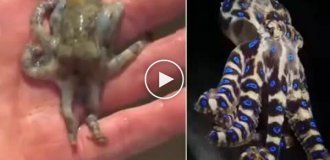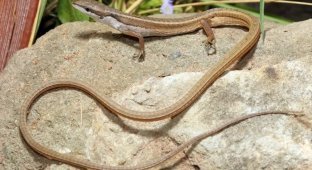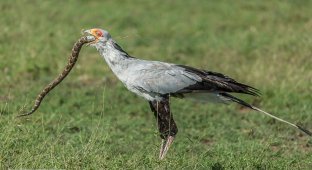Yellow-bellied: this lizard has no limbs, which scares people who don’t know (13 photos)
When you see a yellow wriggling body of a meter and a half in length in the grass, thoughts of poisonous vipers, taipans and other toxic comrades come to mind by themselves. 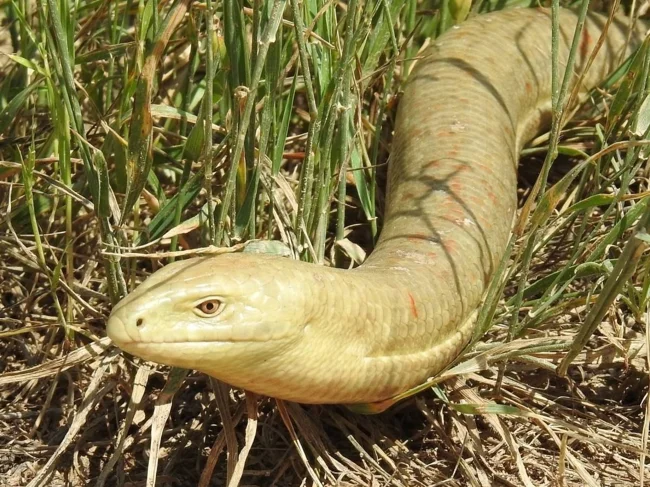
Of course, I knew that I was beautiful, but I didn’t think that I would collect so many admiring cries!
Especially in the arid steppes and semi-deserts from the Mediterranean and Crimea to Iran and Afghanistan, where poisonous reptiles are not uncommon. In a fit of superstitious fear, the poor reptile gets hit on the head with something heavy. For this reason, the lizard quickly ended up in the Red Books of several countries. 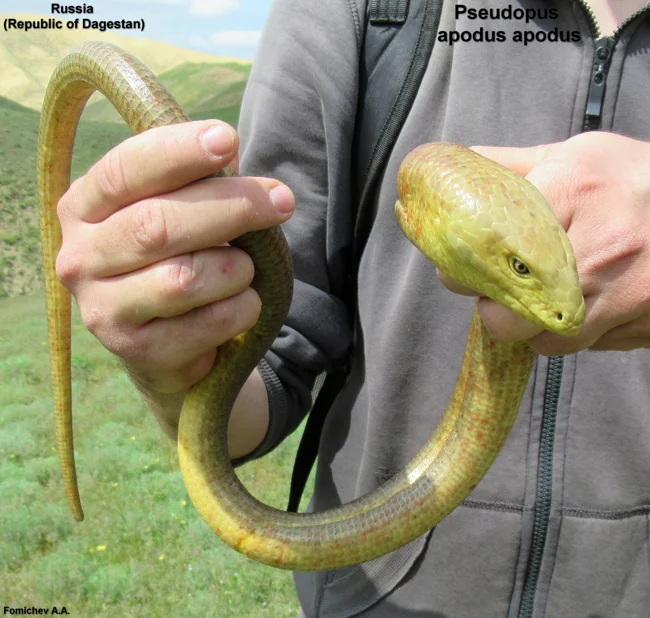
The lizard has become an endangered species in Kazakhstan and the Krasnodar Territory. Know your friend by sight, do not kill the yellow-bellied lizards! They can even be safely picked up.
Abandon your rabid desire to rip the head off! Take a closer look at the reptile's face, and you will see holes near its head - ear holes. Look at the yellow-bellied lizard even longer and notice how it blinks. What does this mean? It means that in front of you is 100% a lizard! Snakes have neither ears nor eyelids! 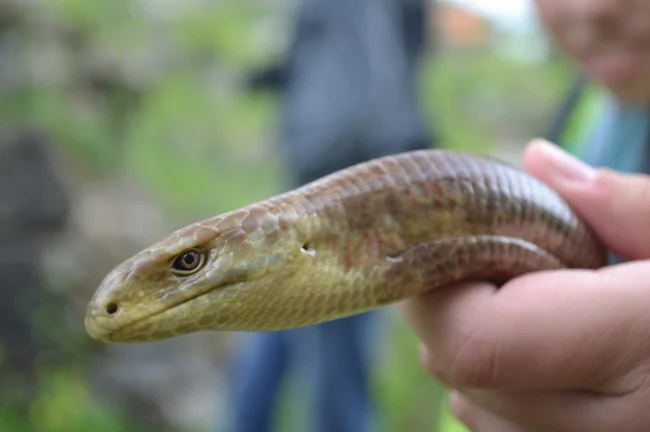
This photo clearly shows the ear opening and the presence of eyelids in the yellow-bellied lizard. 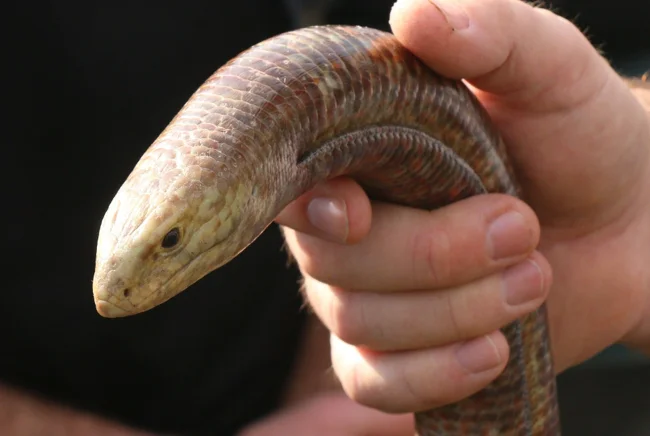
Another important feature that distinguishes the lizard from snakes is the stripe that runs along the side. Because of it, the yellow-bellied lizard resembles a giant leech!
If you dare and decide to catch a yellow-bellied lizard, you can even see the reduced legs if you really want to. However, you need to look at the back, not the front. In the most literal sense: the cloaca has preserved rudimentary processes of former limbs. 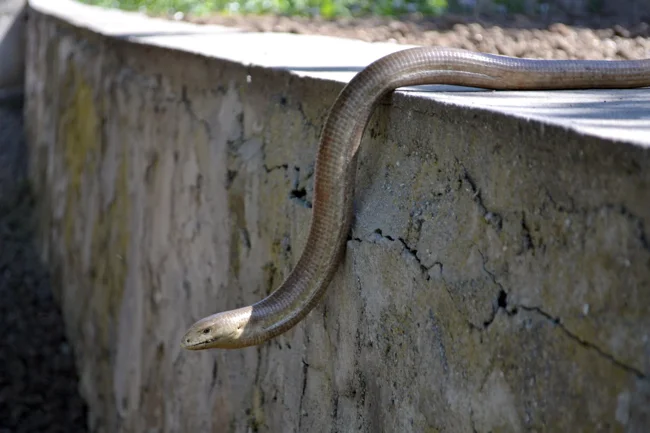
Oops, look what I can do without arms and legs!
When the life of a reptile is on the brink, the legless lizard finally and irrevocably puts an end to the question of its nature. All claims and reproaches against the yellow-bellied lizard disappear as quickly as the tail falls from its butt. 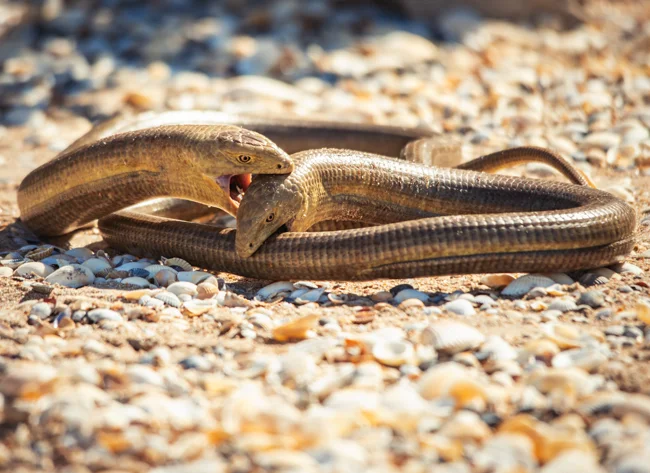
— Seryoga, come on, tear off your tail before they chop us up with a shovel! — I'm trying, Andryukh, I'm trying!
Like other lizards, our hero is able to pull off a trick with autotomy — tearing off limbs. Moreover, the reptile does this with special effects: the tail does not simply separate from the body, but breaks into several pieces! Because of this, in English-language sources, the yellow-bellied lizard is called a "glass snake". They say that the reptile breaks into pieces as soon as you pick it up. 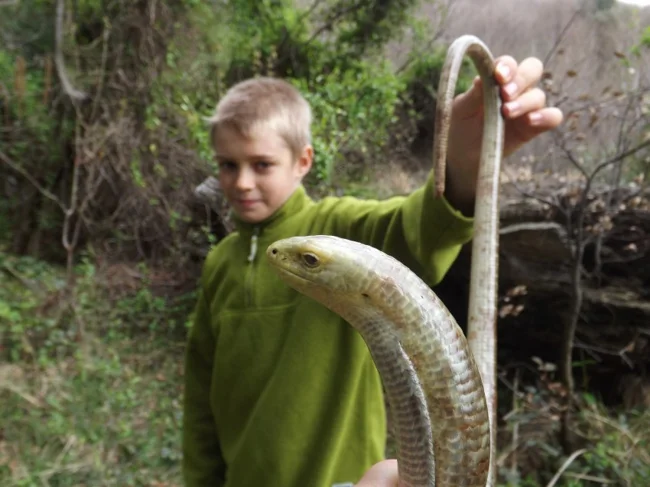
Humans, go away, I'm explosive!
To be fair, the yellow-bellied lizard rarely gives up its tail. So much so that sources even write that the reptile is deprived of autotomy. It is understandable: together with the tail, the yellow-bellied lizard loses 1/3 of its entire body! If the danger is trivial, the lizard behaves like a snake: it hisses, wriggles and tries to smear the enemy with a foul-smelling liquid from the cloaca. 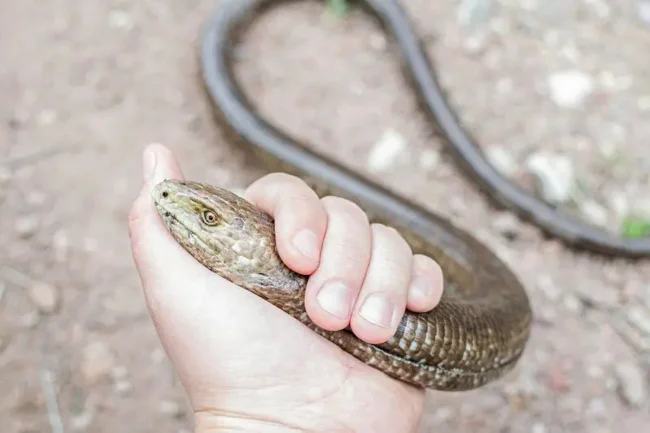
— Let me go! Or do you know what I'll do?! — What? — Nothing!
And all because it can't bite — there are no teeth in its mouth! At least the front ones — they are almost invisible, they are so small. To get food, the yellow-bellied lizard does not need sharp fangs or toxic weapons. The lizard crushes slugs, snails, beetles and other soft-bodied creatures. If they hide in a chitinous shell or shell, the yellow-bellied lizard gnaws armored invertebrates with blunt but powerful teeth that look like cylinders. 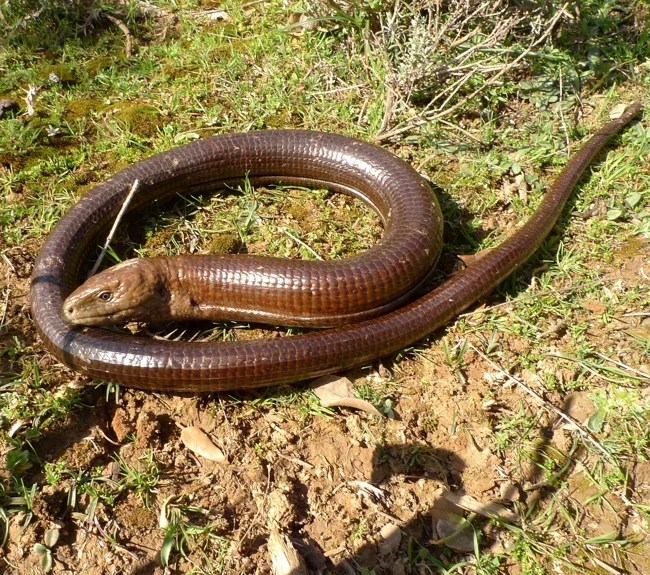
Depending on the place of residence, the color of the yellow-bellied lizard can vary from yellow to dark brown. 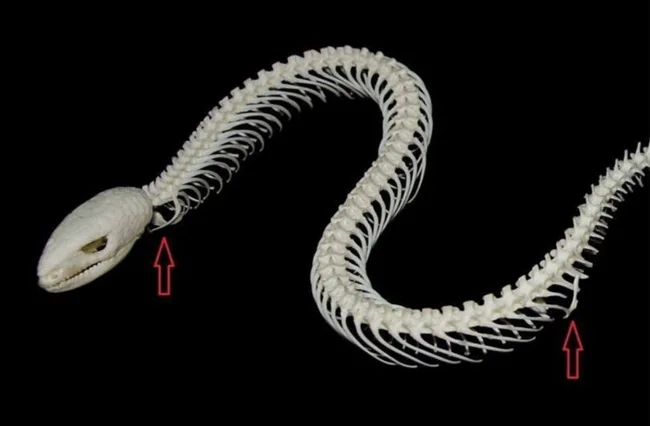
By the way, on the skeleton of the legless lizard you can clearly see the bones of the rudimentary limbs.
Because of its love for soft-bodied prey, the yellow-bellied lizard is especially active in the rain. If there is no precipitation, the lizard warms its sides on pebbles and sand under the scorching steppe sun. In general, any weather is a pleasure for the lizard! Except for winter: from frosts and snowdrifts, the reptile goes underground, into hibernation. 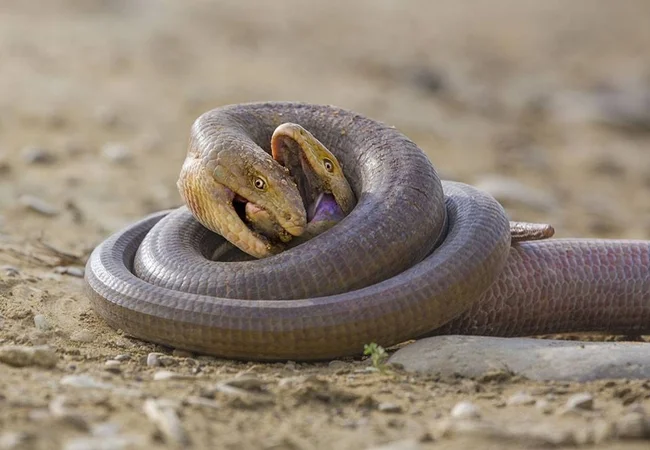
A typical fight for a blanket for any couple.
Suspended animation will last until spring. Having barely opened their eyes, the yellow-bellied ones decide that it is time to continue the race. On what sites the reptilians meet, and where they invite their passions on a date - no one has yet found out. But the results of such meetings are very specific - from 4 to 14 eggs. 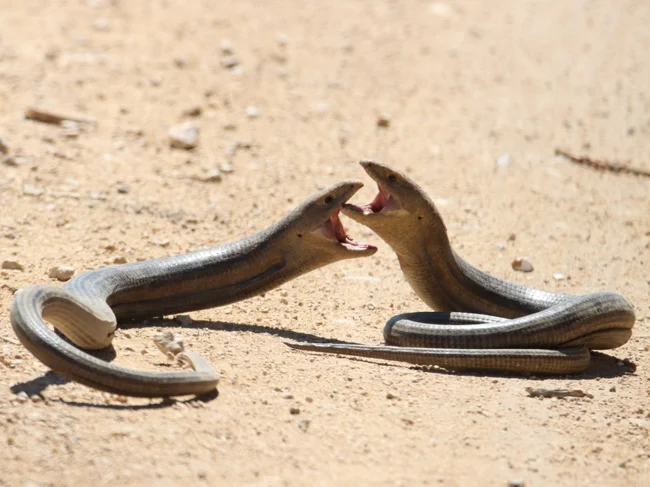
Occasionally photographers manage to capture the fight of yellow-bellied lizards for a female. These fights look both funny and epic.
The clutch slowly bakes in the sun for 1.5 months. Immediately after hatching, the yellow-bellied babies are completely independent. The kids crawl off in all directions to live their life as lizards in snake skin! 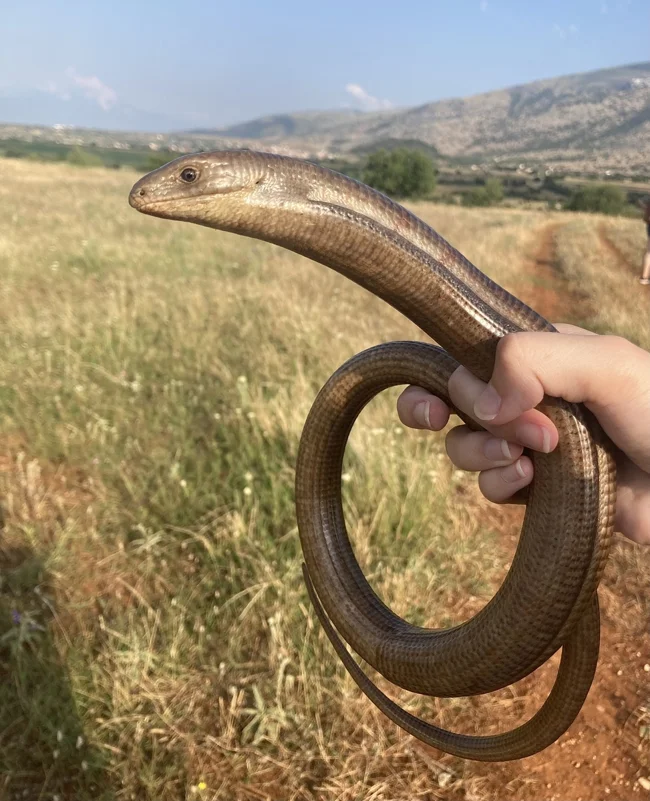
Yellow-bellied mergansers live a long time: 20-30 years in the wild and more than 50 years in captivity!








